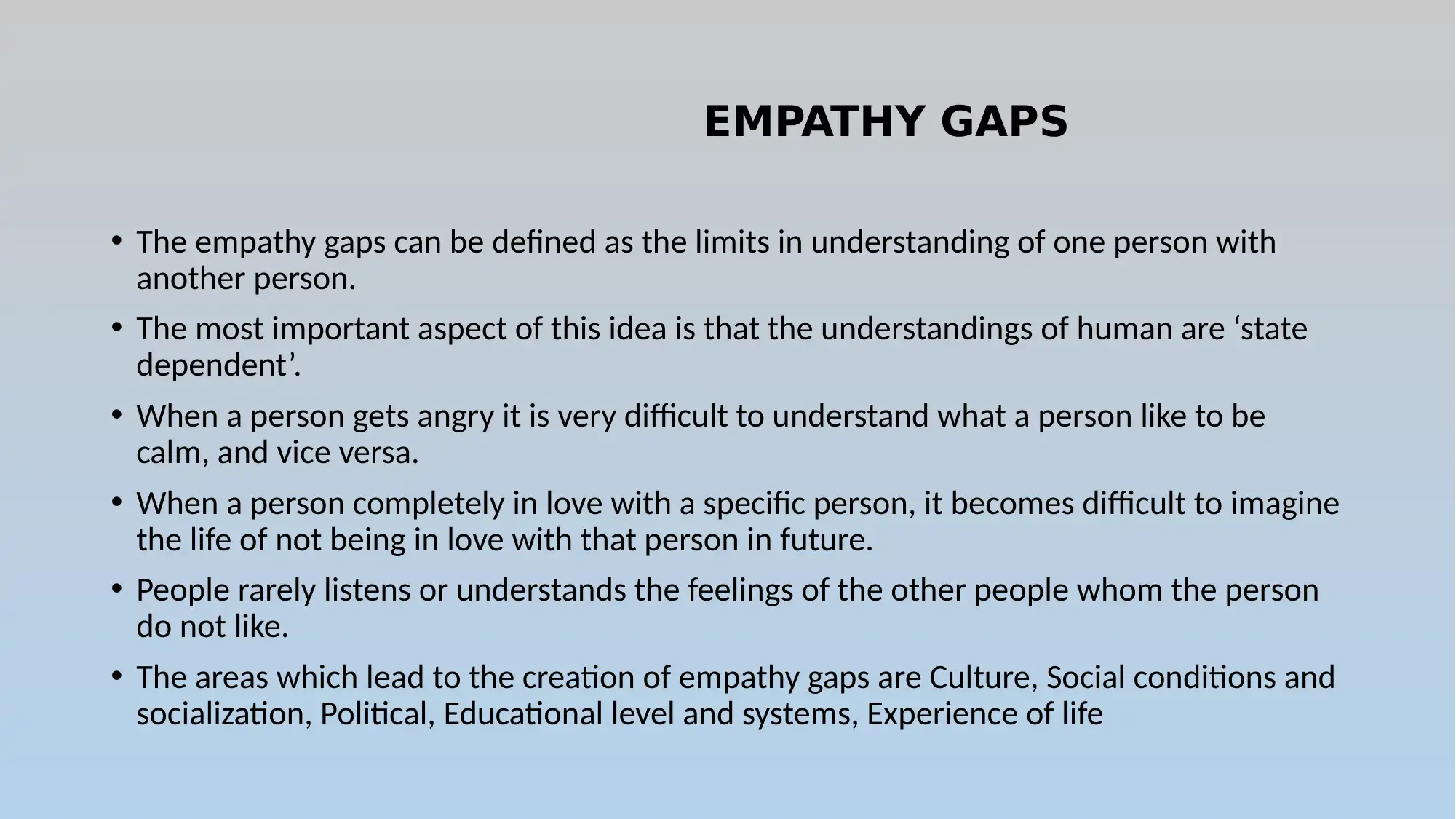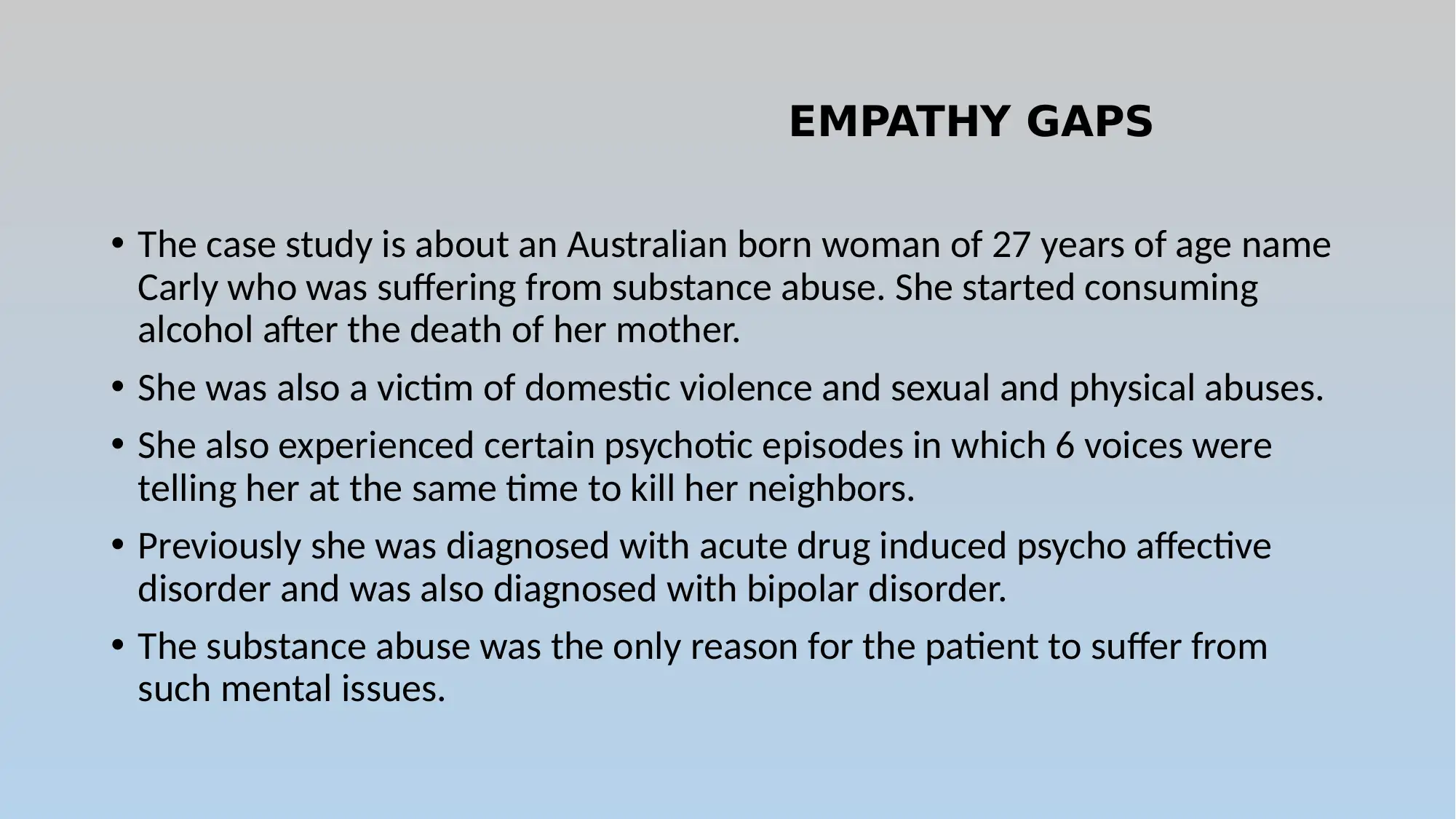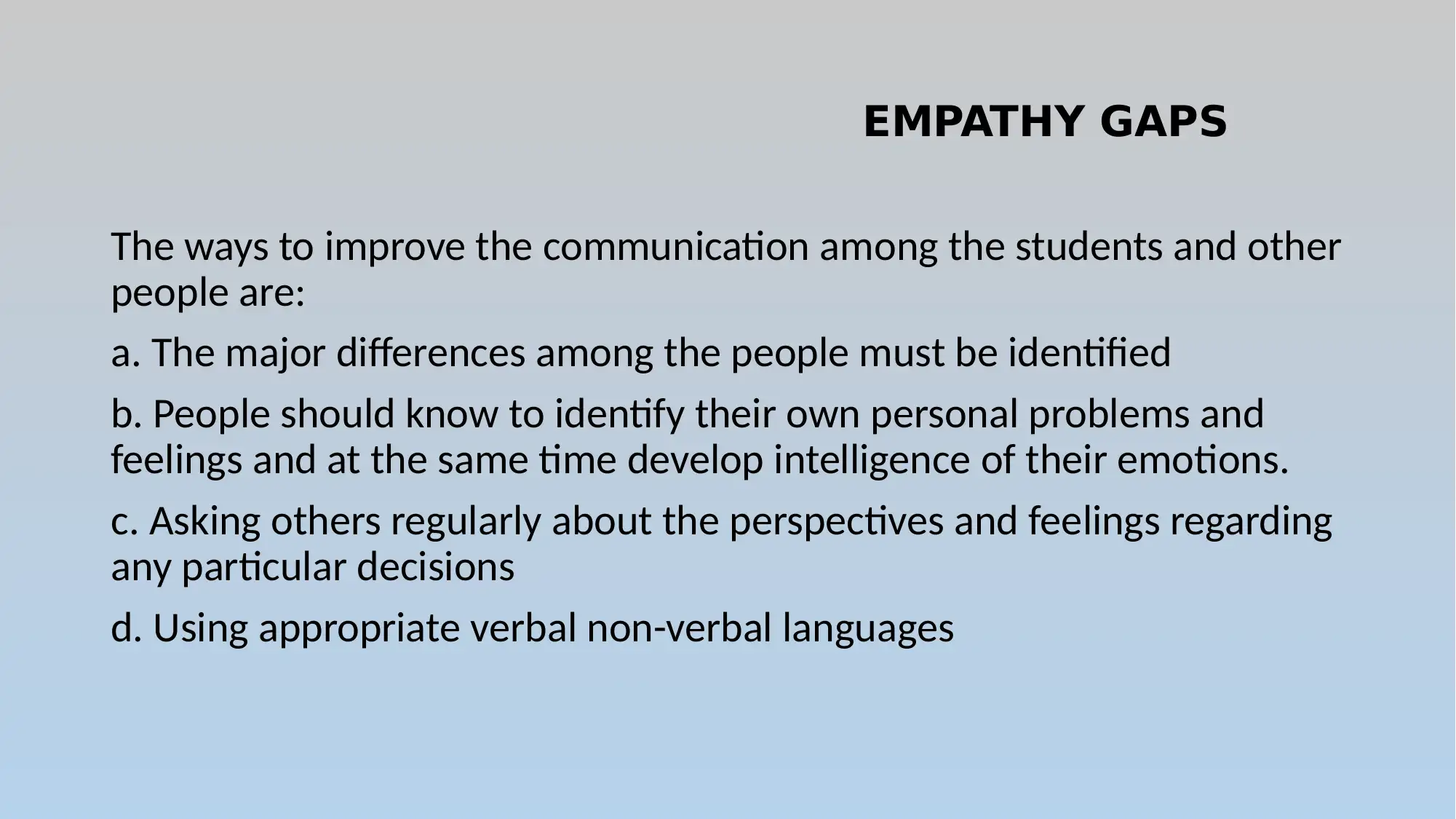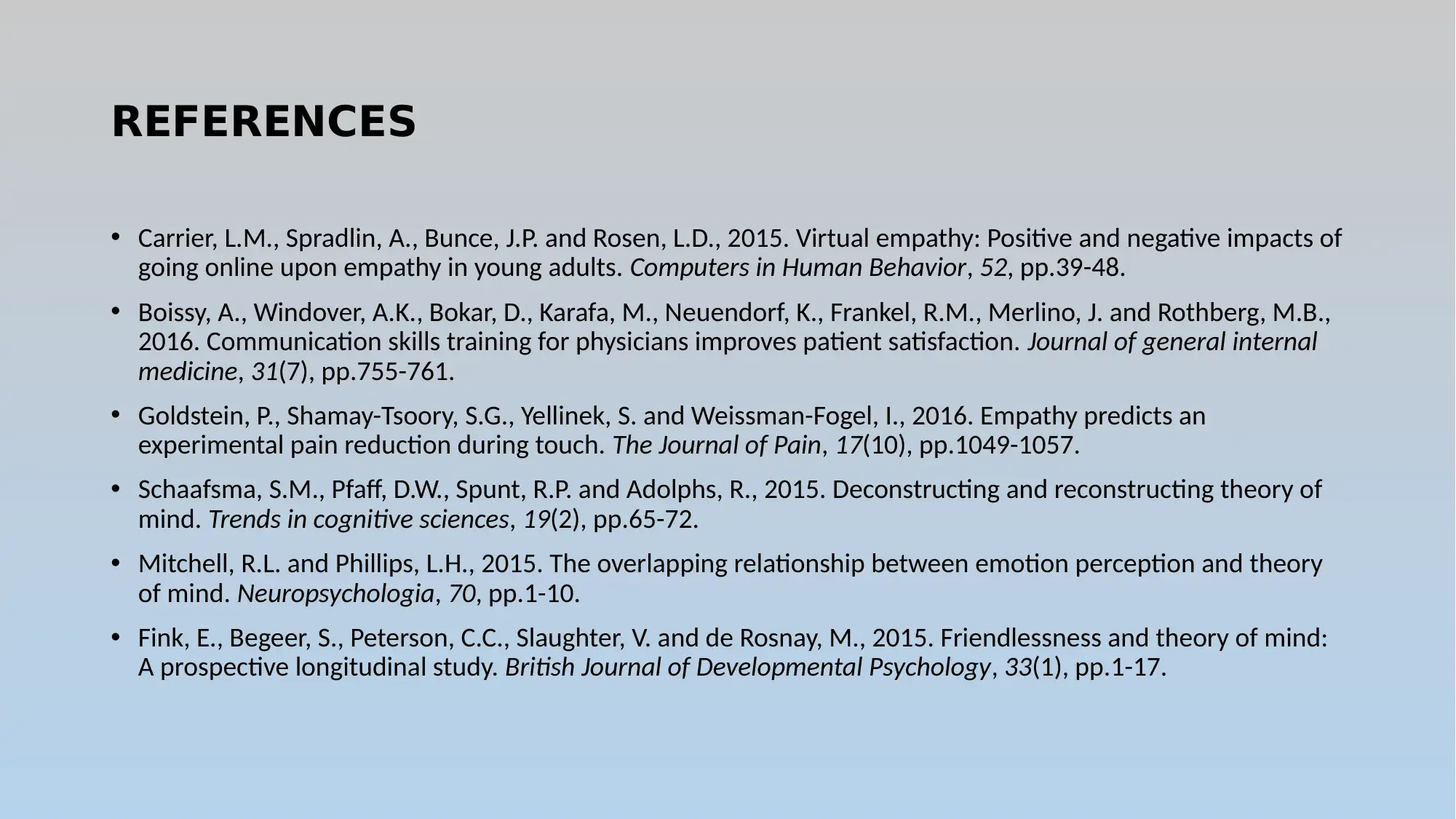Empathy Gaps: Case Study on Bipolar Disorder and Substance Abuse
VerifiedAdded on 2022/09/17
|6
|581
|23
Case Study
AI Summary
This case study explores the concept of empathy gaps, which are limitations in understanding others, often influenced by personal experiences and emotional states. The study focuses on a 27-year-old Australian woman named Carly, who struggles with substance abuse, bipolar disorder, and a history of trauma, including domestic violence and psychotic episodes. The assignment analyzes the patient's condition, highlighting the impact of substance abuse on her mental health and the challenges in communication and understanding. It emphasizes the importance of recognizing personal problems and developing emotional intelligence to improve communication and empathy. The assignment also provides references to support its findings and conclusions.
1 out of 6













![[object Object]](/_next/static/media/star-bottom.7253800d.svg)